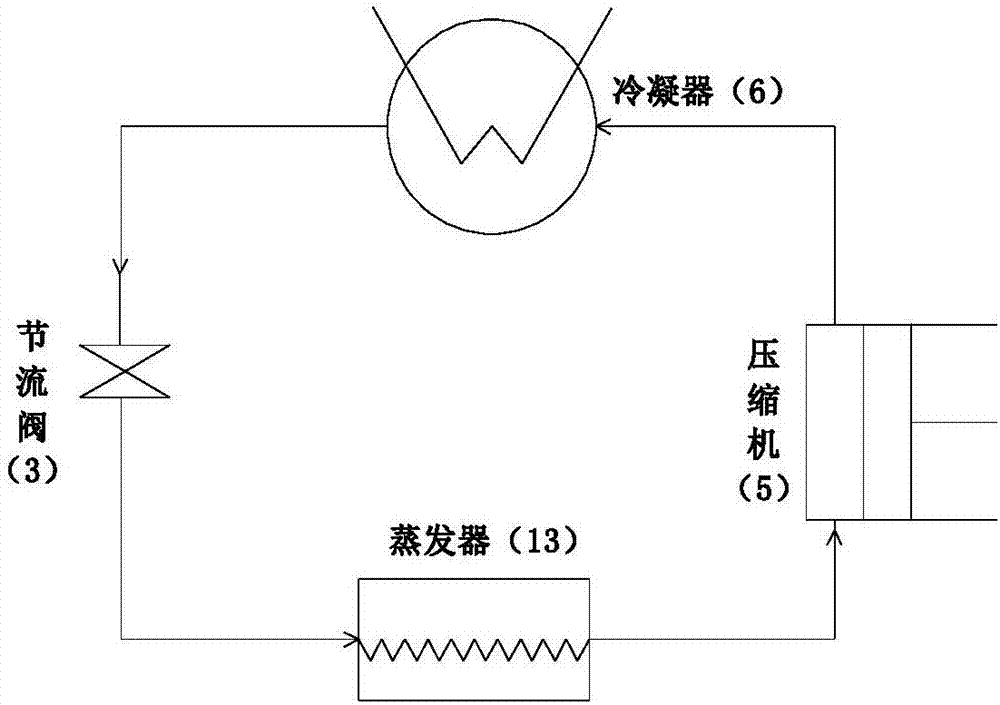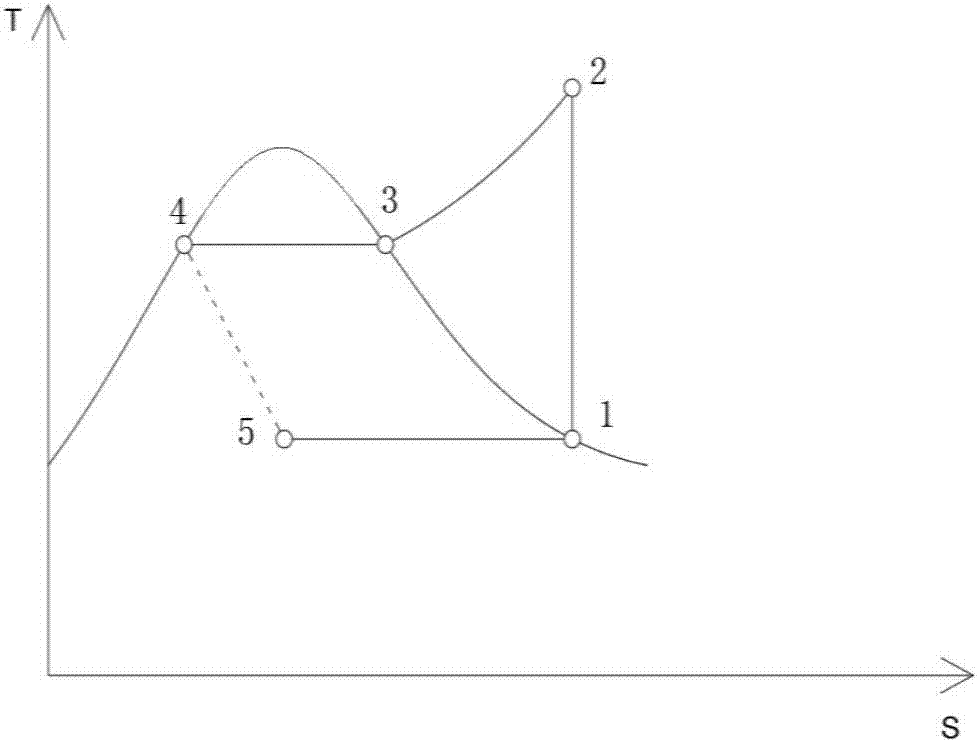High-pressure hydrogen gas refrigerating device of hydrogen internal combustion engine vehicle
A technology of high-pressure hydrogen and refrigeration equipment, which is applied in the direction of household refrigeration equipment, refrigerators, refrigeration components, etc., and can solve the problems of large condenser and evaporator equipment, large space occupation, and engine consumption
- Summary
- Abstract
- Description
- Claims
- Application Information
AI Technical Summary
Problems solved by technology
Method used
Image
Examples
Embodiment example 1
[0018] Such as image 3 As shown, a high-pressure hydrogen refrigeration device for a hydrogen internal combustion engine vehicle includes: a high-pressure hydrogen tank (1), a refrigeration system (2), and the refrigeration system (2) includes an expander (3) and a heat exchanger (4). This case uses a one-stage expansion system. In refrigeration mode: high-pressure hydrogen flows out of the high-pressure hydrogen tank (1), first passes through the piston expander (3) to reduce temperature and pressure, and outputs power to the outside, and then flows into the air-cooled heat exchanger ( 4) Release cold energy to cool down the interior of the car.
Embodiment example 2
[0020] Such as Figure 4 As shown, a high-pressure hydrogen refrigeration device for a hydrogen internal combustion engine vehicle includes: a high-pressure hydrogen tank (1), a refrigeration system (2), and the refrigeration system (2) includes a screw expander (3) and a water-cooled heat exchanger ( 4), refrigerator (7) in the car. This case adopts a three-stage expansion system. High-pressure hydrogen flows out of the high-pressure hydrogen tank (1) and flows into the expansion systems of each stage in turn; in the expansion system of each stage, the hydrogen flows into the first-stage scroll expander (3) to cool down and reduce pressure. Output work, and then flow into the first-stage water-cooled heat exchanger (4) to absorb heat; then flow into the second-stage scroll expander (3) to expand and reduce pressure, do work externally, and flow into the second-stage water-cooled heat exchanger (4) to absorb heat Finally, it flows into the three-stage scroll expander (3) to e...
Embodiment example 3
[0022] Such as Figure 5 As shown, the gas supply system for a hydrogen internal combustion engine vehicle includes: a high-pressure hydrogen tank (1), a refrigeration system (2), an expander (3), a heat exchanger (4), a condenser (8), and an air turbocharger ( 9), nozzle (10), internal combustion engine (11), water tank (12). Hydrogen gas supply pipeline: hydrogen flows out of the high-pressure hydrogen tank (1) and flows through the expansion system at all levels. In this case, the two-stage expansion system is used; in the expansion system at all levels, the hydrogen first flows into the one-stage radial flow expander (3) for expansion Reduce the pressure, do work outside, flow into the first-stage air-cooled heat exchanger (4) to release the cooling capacity, and cool down the inside of the car; then flow into the second-stage radial flow expander (3) to expand and reduce pressure, do work outside, and flow into the second-stage The air-cooled heat exchanger (4) releases ...
PUM
 Login to View More
Login to View More Abstract
Description
Claims
Application Information
 Login to View More
Login to View More - R&D
- Intellectual Property
- Life Sciences
- Materials
- Tech Scout
- Unparalleled Data Quality
- Higher Quality Content
- 60% Fewer Hallucinations
Browse by: Latest US Patents, China's latest patents, Technical Efficacy Thesaurus, Application Domain, Technology Topic, Popular Technical Reports.
© 2025 PatSnap. All rights reserved.Legal|Privacy policy|Modern Slavery Act Transparency Statement|Sitemap|About US| Contact US: help@patsnap.com



